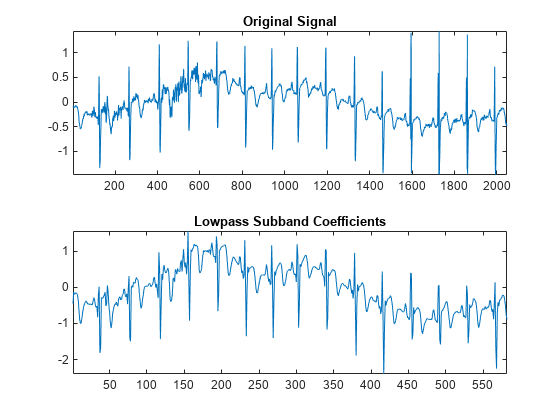tqwt
Description
wt = tqwt(x)x.
The TQWT is computed to the maximum decomposition level with a quality factor of 1. For more information, see TQWT Decomposition Levels.
As implemented, the
tqwtfunction uses a redundancy of 3. For more information, see Redundancy.
wt = tqwt(x,Name=Value)wt =
tqwt(x,QualityFactor=2) specifies a quality factor of 2.
Examples
Input Arguments
Name-Value Arguments
Output Arguments
More About
References
[1] Selesnick, Ivan W. “Wavelet Transform With Tunable Q-Factor.” IEEE Transactions on Signal Processing 59, no. 8 (August 2011): 3560–75. https://doi.org/10.1109/TSP.2011.2143711.
Extended Capabilities
Version History
Introduced in R2021b
